The Cold War was a latent conflict that took place from the end of the Second World War until the dissolution of the USSR - dividing the world into two large blocs (called Western and Eastern, capitalist and communist, First and Second Worlds...) that now he experiences a kind of aftermath under different circumstances. However, it did not come out of nowhere but rather had its roots in the geostrategic positioning of the great Allied powers in the face of the imminent fall of the Nazi regime, which began to discuss the global panorama at the Yalta conference. In this context, what we could establish as the first episode arose:Operation Unthinkable, a British plan to expel Russia from the European areas it had occupied.
We say Russia instead of the Soviet Union because that is how it appeared in the original draft, commissioned by Winston Churchill in mid-May 1945. The date is not wrong either:the war had ended in Europe after the German surrender during the first week of that month, but it continued in the Pacific against Japan, for which the US began a troop withdrawal towards that scenario with a view to an invasion of the Japanese archipelago. Something that worried the premier British because the Soviets had not yet declared war on that front, as agreed, and therefore maintained large forces occupying the eastern half of the European continent as far as Berlin.
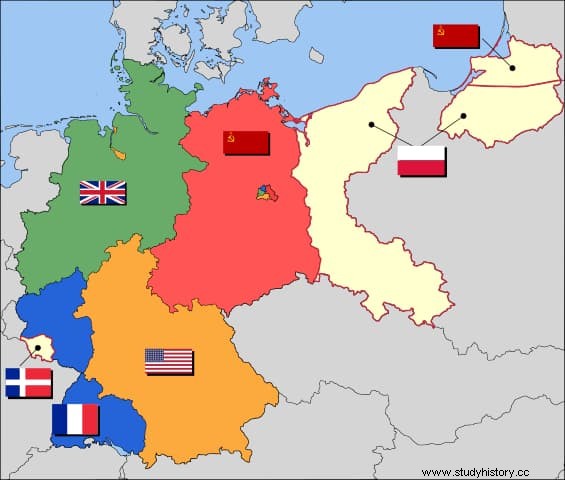
At the Yalta Conference, held in that Crimean town shortly before (February 4-11), Stalin, Churchill and Roosevelt agreed on a series of decisions that, among others, included free elections in all the liberated countries, the creation of the UN (with a Security Council), the partition of Germany, the compensation it should pay and the intervention of the USSR against Japan within a period of three months. The delay of the latter led the British minister to reaffirm his view that Stalin was unreliable and that he might even ally himself with the Japanese if he was attacked. Even so, he commissioned his Joint Chiefs of Staff to plan what was dubbed Operation Unthinkable .
The work required a laborious compilation of reports quantifying the troops of both sides on European soil, as well as the compilation of cartographic material. The exact date of the order is unknown, but the first draft was presented very quickly, on May 22, and the final one was ready on June 9. In his statement he said that his objective was “to impose on Russia the will of the United States and the British Empire” , realizing what he described as "a fair deal for Poland" .
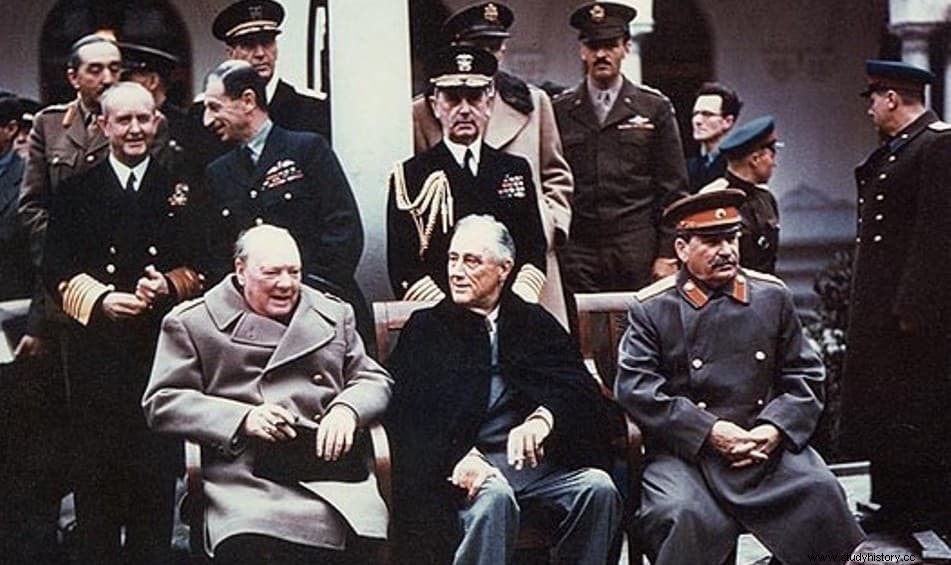
This last and confusing phrase has been interpreted as a probable reference to enforcing the commitments signed in Yalta, something not without a certain irony if one takes into account that at the conference, apart from agreeing on free elections in the country and returning Germanized territories ( the Lebus region, the western part of Pomerania, East Prussia, Silesia and the free city of Danzig), the eastern Polish lands had been handed over to the USSR, also ceding control of the country to it.
Churchill regarded Poland as the key country, as evidenced by Britain's hosting of General Okulitsky's Polish government-in-exile, as opposed to the Soviet-backed communist executive set up on the spot; and the followers of one and the other clashed in the country. Yalta should have meant an agreement, but, in opposition to the western democratic model, Stalin proposed a government according to the Yugoslav model (four communist members plus one non-communist). Churchill defined that situation as “failure” , adding that the British lacked sufficient strength to oppose it.
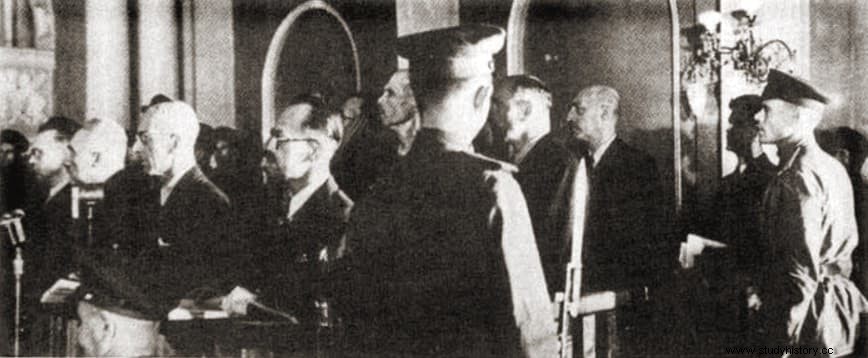
Shortly after, a group of Polish leaders who traveled invited to Moscow to negotiate under the promise of immunity were arrested and prosecuted in the so-called Trial of the Sixteen (by the number of arrests), ending up sentenced to prison without heeding Western protests. Churchill saw an enormous danger in letting the USSR absorb Poland and do the same with Turkey (to which Stalin was beginning to make territorial claims):"If these problems are not resolved before the withdrawal of the American armies from Europe and before the western world dismantles its war machines, a satisfactory solution to the problems will be impossible and the prospects for preventing a third world war will be very low." .
Considering the Soviet Union a threat to the free world , the British premier deemed it necessary to create a front in the easternmost part of Europe to stop it, giving special importance to saving Berlin, Czechoslovakia and Austria, as well as stopping Tito's expansionism towards Italy. Operation Unthinkable was the tool conceived for this, for which he had to count on the British and American armies, since the others did not offer a priori guarantees. The plan consisted of an invasion of the territories of Europe that were in Soviet power and, given the circumstances, it was of immediate action:it set July 1, 1945 as the starting date, chosen because four days later general elections were going to be held. in the UK.
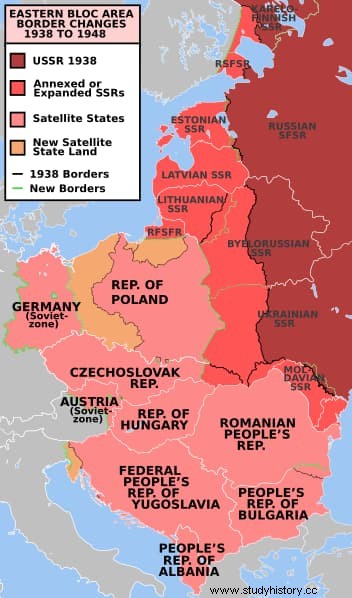
It was planned to launch two attacks in northeastern Europe, in the direction of Poland, with a northern penetration along the Stettin-Schneidemühl-Bydgoszcz axis and a southern one along the Leipzig-Cottbus-Poznan-Breslau axis. Success would depend, according to estimates, on the outcome of the battle between tanks; something that would be a function of the surprise factor, the air support and the presumed greater tactical quality of the Western commanders, taking into account that in front of them they would have an overwhelming numerical superiority of the Soviets in armor.
To carry out the effort also had to be maximum, since the enemy had numerous forces, so it was calculated that it would be necessary to use almost half of the hundred divisions that the Americans, British and Canadians had at that time (14 of them armored), which would initially move over Germany, in Dresden, hitting the heart of the adversary. Polish troops and an extra surprising reinforcement would also be incorporated into that army:a dozen German divisions, whose 100,000 soldiers would be granted freedom -at the moment they were prisoners of war- in exchange for collaborating (although they would take time to be prepared).
Despite this, the USSR would continue to have twice as many tanks and four times as many soldiers, with the equivalent of 103 divisions (they were larger than the Western ones, equivalent to 264 and, of them, thirty armored), apart from the foreseeable support of the affiliated Polish army of General Zygmunt Berling. That is why it was essential, it was insisted, that the first blow be by surprise and decisive, reaching its objectives before the arrival of winter; Otherwise, the Chiefs of the General Staff estimated, everything would lead to a total and long war that would appear adverse.
And it is that the Soviets could oppose 228 infantry and 36 armored divisions against the respective 80 and 23 allies, as well as 11,742 aircraft against the 8,798 of the others. The allies only had superiority in strategic aircraft, with 2,750 against 960, and at sea (an unlikely scenario). Some figures that must have been unsettling for Churchill because a few days later, on June 10, he commissioned a reworking of Operation Unthinkable, changing its focus; it was no longer an offensive one but a defensive one; what would it take to guarantee the defense of the British archipelago and the North Sea in case Stalin ordered an attack when the US sent its forces to the Pacific.
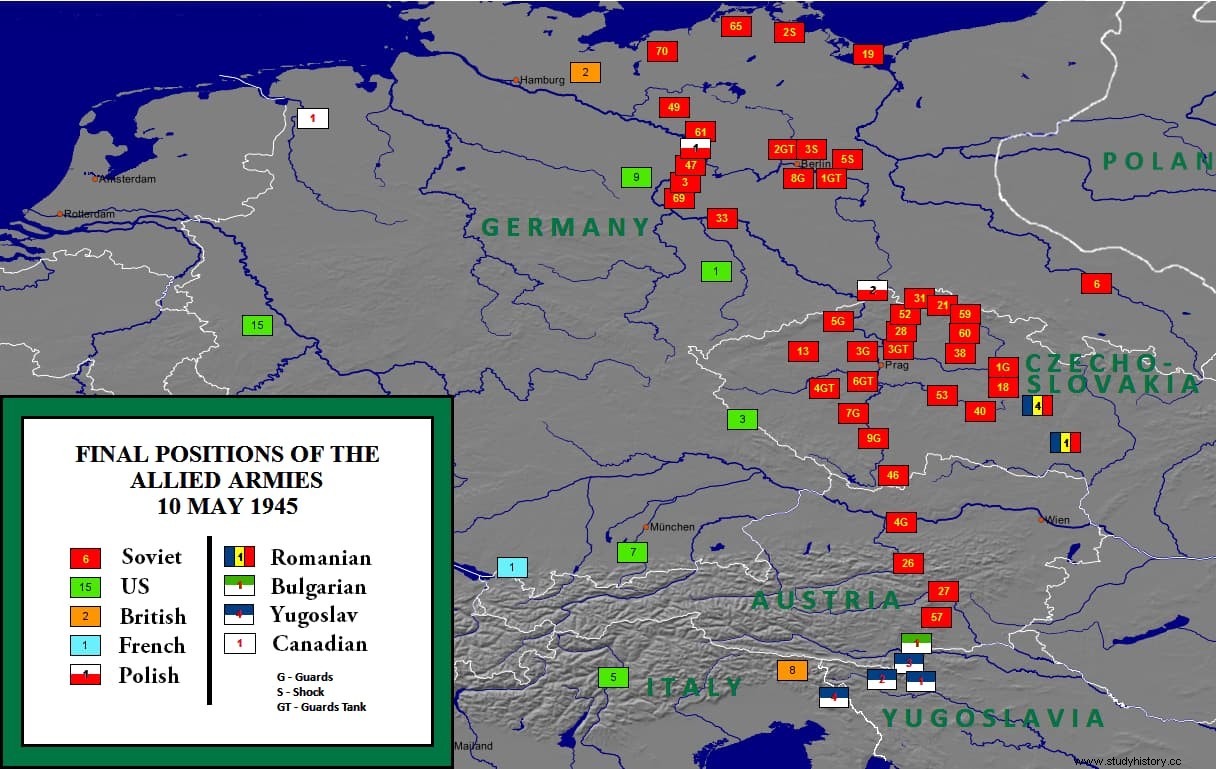
That second plan, which kept the previous name and was kept secret - it was not even revealed to President Truman - concluded that without the Americans the chances of Great Britain being able to resist were practically nil, without Churchill's idea of maintain bases on the mainland. Both the RAF and the Royal Navy could put up a fight, but little could be done in the face of a missile attack, a type of weapon that the Germans had already begun to use shortly before their defeat against England and that the victors of the war were copying. , the Americans thanks to Operation Paperclip (reception of German scientists) and the Soviets after capturing the Peenemünde facilities, from where Hitler launched the V-2 ((based on a variant of these, the A4, the USSR had its first missile, the R-1, in 1948).
On July 5, 1945, the general elections were held in the United Kingdom whose votes, finished counting on the 26th, gave the absolute majority to Labor. Churchill's campaign, based on his management of the war, failed due to fears of the post-war economic challenge and he was replaced by Clement Atlee; The former was seen as the ideal leader to face a special situation such as war, but his unquestionable charisma was harmed by a Conservative Party that did not provide any innovative measures, such as those demanded by the new times.
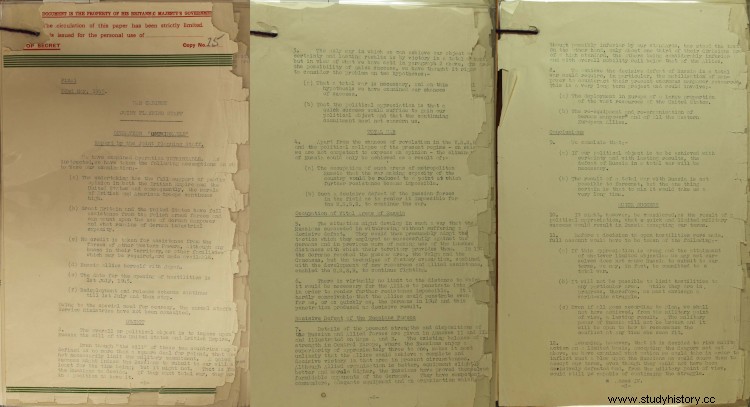
The Labor government paid no attention to the Operation Unthinkable report, so it never went beyond the theoretical level; yes, it was archived but by hand, given the turn that the international context was taking with a new focus of tension in the north of Iran, from where the Soviets refused to leave. During the following years, this new world status of difficult and precarious balance was confirmed, which was to be known by the expressive name of the Cold War, constituting the two antagonistic blocs; it didn't take them long to experience the first serious brush.
It was in 1946, in the so-called Venezia Julia or Marca Juliana, a region located between present-day Croatia, Slovenia and Italy, which had been disputed between the latter and Yugoslavia since the beginning of the century. This forced the Morgan Line to be drawn, a demarcation that divided the place into two zones:one controlled by the Yugoslavs and the other by the Western Allies. That summer, Truman sent troops to reinforce the second, after the Balkan army shot down two American transport planes.
Such escalation meant the recovery of Operation Unthinkable from the archives, Eisenhower handling the possibility of transferring his military troops from Italy to the Netherlands, to leave them closer to the British Isles in the event of a possible need for defense. The tension in Julian Venice grew in 1947, which led to the BETFOR (British Element Trieste Forces) and the TRUST (Trieste United States Troops) being stationed in the allied area, but things did not calm down until 1954, when the territory directly between Italy and Yugoslavia.
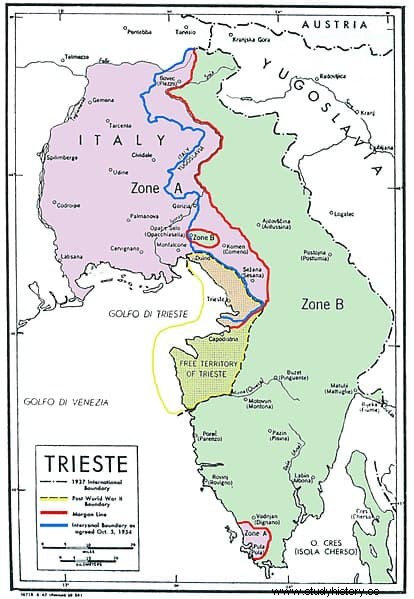
The Unthinkable Operation was kept top secret until the declassification of archival collections in 1998, after which it was made known to the public. Now, it is possible that the Soviets already handled information about its existence very early; This would explain, according to the military historian John Ericksson, the sudden concentration of forces in Poland ordered by Marshal Zhukov in June 1945, although it could also be the result of the distrust of the West towards the West. The question is how such a secret and potentially important document could be leaked.
The answer lies in a group of infiltrated spies that (which we talked about in another article) and who were baptized as the Cambridge Five, because they had been recruited when they were students and / or professors at that university. Specifically, the person responsible was Guy Burgess, a history graduate who had joined the ranks of MI6 (Secret Intelligence Service) hiding his affiliation with the Communist Party in the thirties. In 1944 he joined the News Department of the Ministry of Foreign Affairs and it was in this position, which gave him access to abundant material, that he passed the information to Moscow.
The world seemed determined to walk on the razor's edge and the worst thing is that it became more and more sharp. In August 1945, one month after the proposed date to start Operation Unthinkable, the US dropped the first atomic bomb on Hirohima and completely changed the face of future relations between the two blocs.
